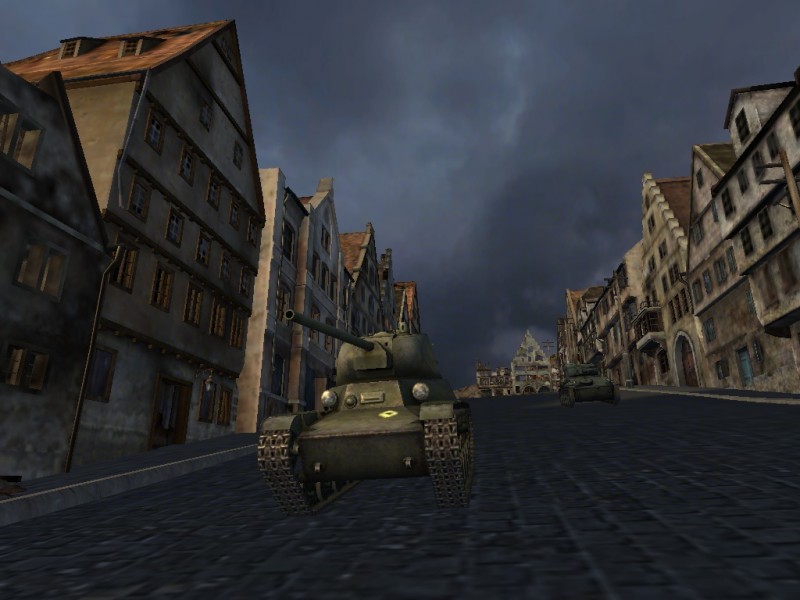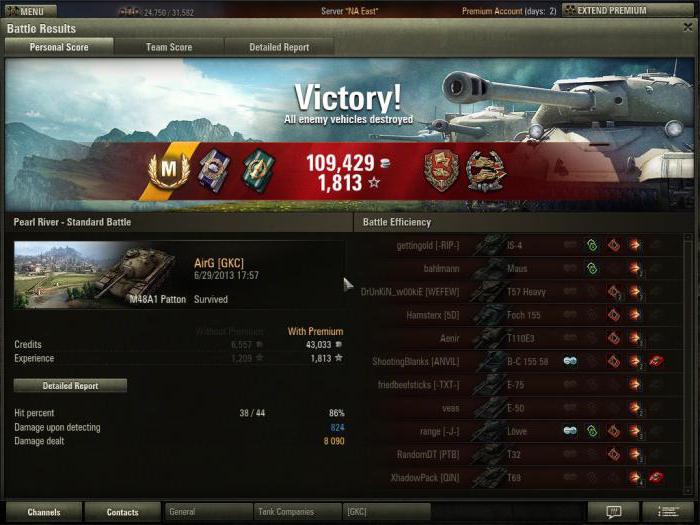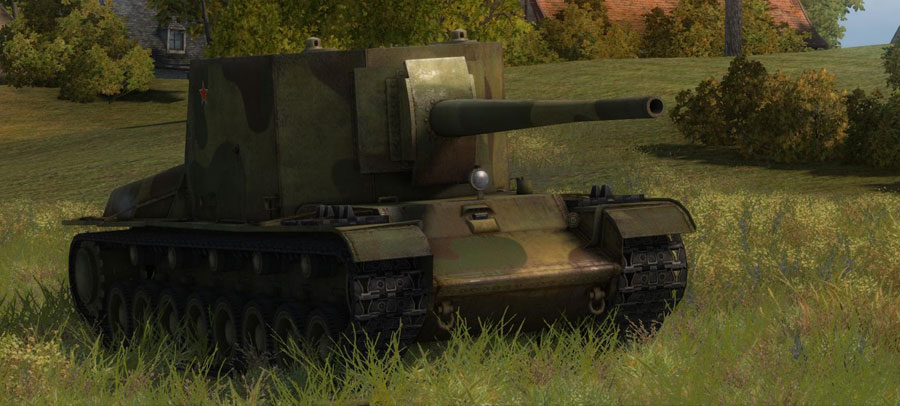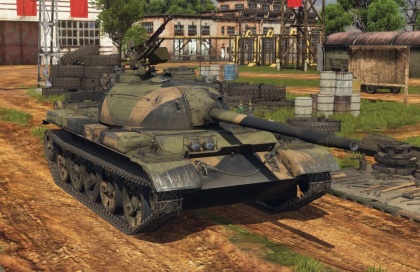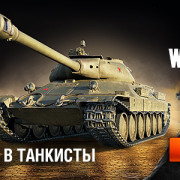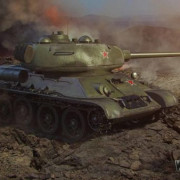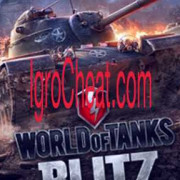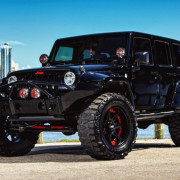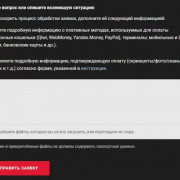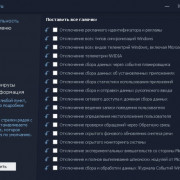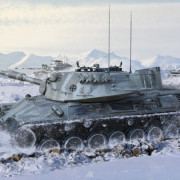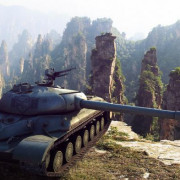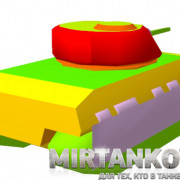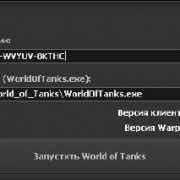Т-34
Содержание:
Комплектация

Орудие у Т-34-3 заметно проигрывает старшему брату. Да, у нас хорошая альфа. На этом позитивные стороны заканчиваются. Пробитие не самое лучшее, а учитывая низкую скорость перезарядки – непробития могут дорого нам обходиться, в отличии от «тайпа». Можно конечно использовать «голду», но тогда вся суть прем-танка (фармить) нивелируется. Вкупе с ужасной точностью и очень долгим сведением, играть на дальних дистанциях нам противопоказано – будем либо мазать, либо не пробивать.

Т-34-3 имеет очень хорошую башню, через которую нужно стараться играть как можно чаще используя особенности местности. Круговое бронирование не непробиваемое, но фронтальная проекция очень хорошо танкует снаряды даже высокоуровневой техники.

Двигатель средней мощности, который предоставляет нам почти 15 лошадок на тонну. В результате у нас очень хорошая скорость и неплохая динамика, которые позволяют как-то влиять на ход игры, перемещаясь по полю боя и «вытаскивая» проигранные направления.

Ходовая часть имеет очень неплохую скорость поворота – 46 градусов в секунду.

Рация как рация. 600 м – не самый выдающийся, но вполне удовлетворительный показатель.
Combat performance
T34 advancing with infantry at kursk.jpg
The T-34 is often used as a symbol for the effectiveness of the Soviet counterattack against the Germans. The appearance of the T-34 in summer 1941 was a psychological shock to German soldiers, who had been prepared to face an inferior Soviet enemy; this is shown by the diary of Alfred Jodl, who seems to have been taken by surprise at the appearance of the T-34 in Riga
The T-34 could take on all 1941 German tanks effectively. However, the new tank suffered severe problems, e.g. from engines literally grinding to halt due to dust and sand ingestion — the original Pomon filter was almost totally ineffective — and some serious mechanical troubles beset its transmission and clutch. At least half the first summer’s total tank losses were due to breakdowns rather than German fire, although this also included old tanks in disrepair. There was a shortage of repair equipment, and it was not uncommon for early T-34s to go into combat carrying a spare transmission on the engine deck. The mechanical troubles were eventually sorted out.
ARV (right) towing a disabled T-34 at the Battle of Kursk.jpg
During the winter of 1941–42, the T-34 again dominated German tanks through its ability to move over deep mud or snow without bogging down. German tanks could not move over the same terrain the T-34 could handle. The Panzer IV used an inferior leaf spring suspension and narrow track with a tendency to sink in deep mud and snow.
The German infantry, at that time armed mostly with PaK 36 37 mm (1.46 in) antitank gun, had no effective means of stopping T-34s. During the Battle of France the Pak 36 had earned the nickname «Door Knocker» due to its inability to penetrate anything but the lightest tank armour, though it worked very well at announcing the presence of the gun crew. Needless to say, crews of these weapons fighting on the Eastern front also found it severely underpowered for engaging Soviet tanks, often having to rely on heavier towed firepower, such as the relatively rare but effective Pak 38, the newer and much heavier Pak 40 and especially the 88 mm Flak guns that could not be moved into location as easily. Only the poor level of Soviet crew training, the ineptitude of Soviet commanders, and the early distribution prevented the T-34 from achieving greater success.
The emphasis in the Red Army in 1942–43 was on rebuilding the losses of 1941 and improving tactical proficiency. T-34 production increased rapidly, but the design was «frozen»—generally, only improvements that sped production were adopted. Soviet designers were well aware of the need to correct certain deficiencies in the design, but these improvements would have cost production time and could not be implemented. By mid-1943 T-34 production was running at about 1,000 tanks per month, much higher than the German rate.
In response to the sheer number of T-34s appearing on the battlefield and the ever growing need for heavier firepower, the Germans were beginning to field very large numbers of the high-velocity PaK 40 75 mm gun, both towed and self-propelled. These made up most of the anti-tank artillery by 1943. By late 1942 and into mid 1943 Germany had also begun to field the revered Tiger heavy tank and Panther medium tank, which further increased the need for an improved T-34. These improved versions came in two notable forms: an uparmoured version in 1943 that incorporated greater fuel capacity, reliability, and a modified turret; and a 1944 version with a new turret carrying a form of the 85 mm ZiS AA/AT gun. This last greatly increased firepower over the previous 76.2 mm F-34 cannon and finally gave the T-34 a better offensive capability
The T-34-85 in early 1944 gave the Red Army a tank with better armour and mobility than German Pzkw IV and Sturmgeschütz III, but it could not match the Panther in gun or armour protection. To the Soviet advantage there were far fewer Panthers than T-34s, and the T-34-85 was good enough to allow skilled crew and tactical situations to tip the balance.
At the outset of the war, T-34 tanks amounted to only about four percent of the Soviet tank arsenal, but by the war’s end, they comprised at least 55% of the USSR’s output of tanks.
By the time the T-34 had replaced older models and became available in greater numbers, newer German tanks, including the improved Panzer V ‘Panther’, outperformed it. The Soviets’ late-war Iosif Stalin tanks were also better-armed and better-armoured than the T-34.
T-34 from factory 112 destroyed at the Battle of Prokhorovka 1943.
Establishing and maintaining production
The T-34 posed new challenges for Soviet industry. It was the most heavily armoured medium tank produced to that point, and subassemblies originated at several plants: Kharkov Diesel Factory No. 75 supplied the model V-2 engine, Leningrad Kirovsky Factory (former Putilov works) made the original L-11 gun, and the Dinamo Factory in Moscow produced electrical components. Tanks were initially built at KhPZ No. 183, in early 1941 at the Stalingrad Tractor Factory (STZ), and starting in July shortly after the German invasion at Krasnoye Sormovo Factory No. 112 in Gorky. There were problems with defective armour plates, however. Due to a shortage of new V-2 diesel engines, the initial production run from the Gorky factory were equipped with the BT tank’s MT-17 gasoline-burning aircraft engine, and inferior transmission and clutch. Only company commanders’ tanks could be fitted with radios, which were expensive and in short supply. The L-11 gun did not live up to expectations, so the Grabin design bureau at Gorky Factory No. 92 designed a superior F-34 76.2 mm gun. No bureaucrat would approve production, but Gorky and KhPZ started producing the gun anyway; official permission only came from Stalin’s State Defense Committee after troops in the field sent back praise for the gun’s performance.
There was political pressure from conservative elements in the army to redirect resources into building the older T-26 and BT tanks, or to cancel T-34 production pending completion of the more advanced T-34M design. This political pressure was brought to bear by the developer of the KV-1 and IS-2 tanks which were in competition with the T-34. (Political pressure between designers and factories producing different tanks to meet the same requirements continued much later post-war, including a period when the T-55, T-64, T-72, and T-80 were in concurrent production at several factories with differing political patrons on the supreme council of the USSR. Germany’s surprise attack against the Soviet Union in June 22, 1941 (Operation Barbarossa) forced the Soviet Union to freeze further development, and shift into full production of tanks.
Germany’s rapid advances forced the monumental evacuation of tank factories to the Ural mountains. KhPZ was re-established around the Dzherzhinski Ural Railcar Factory in Nizhny Tagil, renamed Stalin Ural Tank Factory No. 183. The Kirovsky Factory was evacuated just weeks before Leningrad was surrounded, and moved with the Kharkov Diesel Factory to the Stalin Tractor Factory in Chelyabinsk, soon to be nicknamed Tankograd (‘Tank City’). Voroshilov Tank Factory No. 174 from Leningrad was incorporated into the Ural Factory and the new Omsk Factory No. 174. The Ordzhonikidze Ural Heavy Machine Tool Works (UZTM) in Sverdlovsk absorbed several small factories. While these factories were being moved at record speed, the industrial complex surrounding the Stalingrad Tractor Factory produced forty percent of all T-34s
As the factory became surrounded by heavy fighting in the Battle of Stalingrad, the situation there grew desperate: manufacturing innovations were necessitated by material shortages, and stories persist that unpainted T-34 tanks were driven out of the factory into the battlefields around it. Stalingrad kept up production until September 1942.
Barring this interruption, the only changes allowed on the production lines were to make the tanks simpler and cheaper to produce. New methods were developed for automated welding and hardening the plate, including innovations by Prof. Evgeny Paton. The design of the 76.2 mm F-34 gun Model 1941 was reduced from the earlier model’s 861 parts to only 614. Over two years, the production cost of the tank was reduced from 269,500 rubles in 1941, to 193,000, and then to 135,000 (Zaloga & Grandsen 1984:131). Production time was cut in half by the end of 1942, even though most experienced factory workers had been sent to the battlefield and replaced by a workforce that included 50% women, 15% boys and 15% invalids and old men. At the same time T-34s, which had been «beautifully crafted machines with excellent exterior finish comparable or superior to those in Western Europe or America» were much more roughly finished, although mechanical reliability was not compromised.
Михаил Кошкин и перипетии появления Т-34

Михаил Кошкин родился в семье крестьянина и рано потерял отца, надорвавшегося на работе, и был вынужден в десятилетнем возрасте уехать в Москву на заработки. Мать дала ему записку к дяде, жившему в городе, но на вокзале, в драке с московской шпаной, Михаил, раздавая тумаки, потерял ее. Не зная, как добраться до родственника, парень чуть не замерз насмерть, и только подобравший уже окоченевшего Михаила совершенно чужой ему человек спас будущего конструктора. Мужчина устроил найденыша на кондитерскую фабрику, где Михаил и проработал до призыва на фронт Первой Мировой.
После революции будущий конструктор пошел добровольцем в Красную Армию и воевал в Гражданской войне. Именно там он и увидел впервые английский танк. Зрелище так заворожило деревенского паренька, что он загорелся мечтой — построить свой, советский танк. Поэтому уже после войны он просит перевести его с должности заведующего агитационно-пропагандистским отделом на учебу по технической специальности.
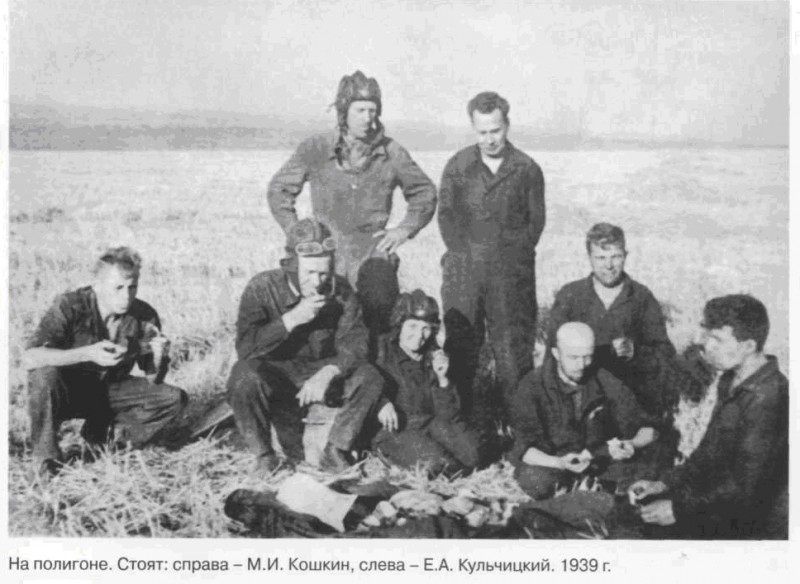
В Ленинграде он заканчивает машиностроительный факультет с дипломной работой «Коробка передач среднего танка» и через некоторое время начинает работать в конструкторском бюро, создавая новые военные машины.
Его новая идея — средний танк сочетавший в себе наклонную броню — тогда еще совершенно неизвестную, широкие гусеницы и мощную 76 миллиметровую пушку, поначалу не нашла понимания у руководства. Несмотря на это, Михаил Ильич нашел в себе силы представить проект танка высшему командованию, где был раскритикован, но при этом неожиданно получил поддержку Сталина, назвавшего будущую тридцатьчетверку «ласточкой».

Получив задание создавать свой танк в свободное от работы над основной задачей время, Кошкин ушел в дело с головой, и в 1940 году представил первый образец нового среднего танка Т-34 перед высшим руководством страны.
С этим связана трагическая история. Дело в том, что представляемые танки должны были иметь большой пробег, а тридцатьчетверка не успела его накатать и Кошкину запретили показывать машину. После этого конструктор решается накатать пробег, поехав на двух танках из Харькова в Москву, что и выполняет, при этом серьезно простыв. Танк производит фурор и принимается на вооружение, но Кошкин так и не оправляется от заболеваний и умирает 26 сентября 1940 года.

Т-34 в разрезе.
Танк Т-34 имел наклонную броню 45-52 мм, 76 мм пушку и два пулемета калибром 7,62 мм, массу — 28 тонн, экипаж — 4 человека и максимальную скорость 55 км/ч.
Существует легенда, согласно которой его могила была специально уничтожена немецкими бомбардировщиками, так как Гитлер ненавидел создателя Т-34 и объявил его своим личным врагом даже после смерти.
Перки для экипажа
Командир
- Боевое братство
- Шестое чувство
- Ремонт
- Маскировка
Наводчик
- Боевое братство
- Плавный поворот башни
- Ремонт
- Маскировка
Механик-водитель
- Боевое братство
- Король бездорожья
- Ремонт
- Маскировка
Заряжающий
- Боевое братство
- Бесконтактная боеукладка
- Ремонт
- Маскировка
Начинаем с прокачки ББ с целью улучшения всех характеристик танчика, что для Т-34-3 будет очень полезным
Стоит обратить внимание на изучение бексонтактной боеукладки, ибо критовать нам её будут часто. Ремонт и маскировка – стандартные умения для многих СТ, тем более для Т-34-3, поскольку воевать мы будем часто в ближнем бою
Послевоенная судьба Т-34

До 1950 года Т-34 являлся основным танком армии СССР. Позже был снят с вооружения и заменен более совершенными боевыми машинами. Но это не значит, что его боевое применение на этом закончилось. После завершения Второй мировой войны танки Т-34-85 в значительных количествах поставлялись в различные страны Европы и Азии, где широко применялись в многочисленных военных конфликтах, включая войну в Корее, Шестидневную войну и многочисленные военные конфликты на территории бывшей Югославии в начале 1990-х годов.
Забавно, что даже в 2006 году тридцатьчетверку пытались использовать в Европе во время гражданского конфликта. Во время антиправительственных выступлений в Будапеште, демонстранты угнали танк с размещенной в центре города экспозиции, посвящённой 50-летию восстания в Венгрии, и попытались на нем прорвать полицейское оцепление, однако были остановлены полицией, применившей слезоточивый газ.
Но и это еще не все. В 2015 году Т-34-85 был использован как артиллерийская установка в Йемене во время войны, а в 2017 был замечен у боевиков во время войны в Сирии.
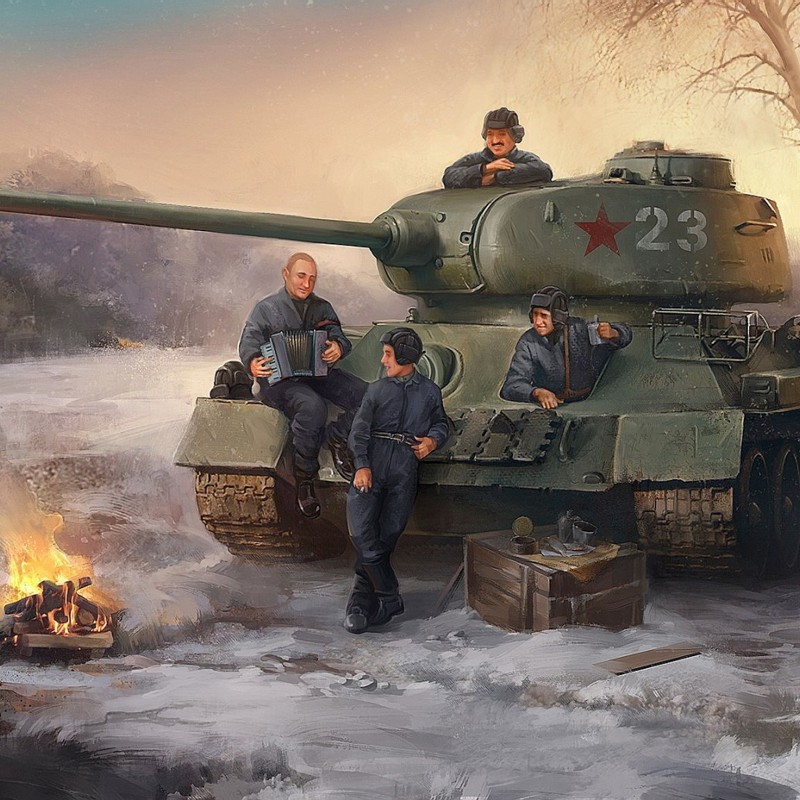
Как бы там ни было, Т-34 смотрящий на нас с многочисленных памятников великой Отечественной, это один из символов Победы, танк, который ковался как оружие защиты Родины и на котором прошел войну мой дед.
Сравнение T34 с другими тяжелыми премиумными танками 8 уровня
|
Характеристики |
T34 (США) |
Lowe (Германия) |
ИС-6 (СССР) |
КВ-5 (СССР) |
M6A2E1 (США) |
FCM 50 t (Франция) |
|
Прочность |
1500 HP |
1650 HP |
1550 HP |
1780 HP |
1500 HP |
1500 HP |
|
Масса (т) |
71.85 т |
99.85 т |
59.9 т |
105 т |
70.5 т |
57.5 т |
|
Мощность двигателя (л.с.) |
810 л.с. |
800 л.с. |
700 л.с. |
1200 л.с. |
960 л.с. |
1000 л.с. |
|
Максимальная скорость (км/ч) |
35 км/ч |
35 км/ч |
35 км/ч |
40 км/ч |
29 км/ч |
51 км/ч |
|
Скорость поворота(град/сек) |
22 °/с |
24 °/с |
26 °/с |
18 °/с |
24 °/с |
40 °/с |
|
Бронирование корпуса (лоб/борта/корма в мм) |
102/76/51 мм |
120/80/80 мм |
100/100/60 мм |
180/150/140 мм |
191/44/41 мм |
120/80/80 мм |
|
Бронирование башни (лоб/борта/корма в мм) |
279/127/203 мм |
120/80/80 мм |
150/150/100 мм |
180/150/140 мм |
191/89/208 мм |
120/80/60 мм |
|
Урон базовым снарядом |
400/400/515 HP |
320/320/420 HP |
390/390/465 HP |
300/300/360 HP |
320/320/420 HP |
240/240/320 HP |
|
Бронепробиваемость базовым снарядом (мм) |
248/297/60 мм |
234/294/60 мм |
175/217/61 мм |
167/219/54 мм |
198/245/53 мм |
212/259/45 мм |
|
Скорострельность орудия (выстр/мин) |
4 мин-1 |
5 мин-1 |
5.13 мин-1 |
7 мин-1 |
5.05 мин-1 |
8 мин-1 |
|
Скорость поворота башни (град/сек) |
18 |
23 |
24 |
21.25 |
23 |
36 |
|
Обзор (м) |
360 м |
400 м |
350 м |
350 м |
380 м |
400 м |
|
Дальность связи (м) |
745 м |
710 м |
440 м |
440 м |
570 м |
750 м |
Combat Performance Conclusions
A natural comparison can be made between the T-34 and the US M4 Sherman medium tank. Each tank formed the backbone of the armoured units in their respective allied armies. The T-34 was a «world-beater» at the time of its debut, while the Sherman was a strong contender when introduced in 1942. Both models were upgraded and improved extensively throughout their service life, receiving new turrets with more powerful guns. Both were designed for ease of manufacture and maintenance, even sacrificing some performance for this goal. Neither was a match for the German Panther or Tiger tanks in armour or firepower, but these heavy vehicles were both in a class more comparable to the Soviet IS-2 heavy tank or the American M26 Pershing
Tanks were expected to have many roles on the battlefield, the foremost being infantry support and exploitation. The tank-vs-tank role is nonetheless important. German tank production was limited to relatively small numbers of superior but complex vehicles (in part because of production diversion into self-propelled guns), which put them at a numerical disadvantage. The Soviet decision to build large numbers of T-34s, gradually improving and simplifying the design, proved to be a superior strategy that helped win World War II.
Other key factors diminishing the initial impact of T-34s on the battlefield were the poor state of leadership, tank tactics, and crew training, a consequence of Stalin’s purges of the Soviet officer corps in the late 1930s, aggravated by the loss of the best-trained personnel during the Red Army’s disastrous defeats in 1941. Many crews went into combat with only their basic military training plus seventy-two hours of classroom instruction. These problems were exacerbated by poor ergonomics and lack of radios during the early part of the war, making it practically impossible to coordinate tank units in combat. German tank soldiers found that the Soviet armor attacked in rigid formations and took little advantage of terrain. By 1943–44, these problems had largely been corrected.
Despite the many design issues, the T-34 had a very strong initial design allowing for all ongoing engineering to emphasis manufacturing improvements.
Crew Skills
- Repair as the first skill for all the crew members is a solid choice, allowing broken tracks or other damaged modules to be brought to operational condition as quickly as possible. Camouflage is also quite viable due to the T-34’s already good innate camouflage values. This can help when flanking, allowing it to remain undetected longer.
- A more specialized set of first skills would be Snap Shot (Commander/Gunner), Smooth Ride (Driver), Situational Awareness (Radio Operator). The loader only has perks available, which are not useful until they have reached 100%, Repair or Camouflage are viable options for the loader, which may later be swapped out for his perks. The combination of Snap Shot and Smooth Ride act like a Vertical Stabilizer (which the T-34 does not have access to), reducing the accuracy penalties while moving or turning the turret, and by extension, allowing the T-34 to get an accurate shot off faster after stopping. Situational Awareness increase the tank’s 350 m view range further. Recon may also be used instead of Snap Shot if the emphasis is on enhancing spotting capability. Smooth Ride may be substituted with Off-Road Driving for improved overall mobility. Clutch Braking is generally not as useful, as the T-34 already has excellent hull traverse.
- Upon reaching 100% on the first skills, dropping the commander’s skill for Sixth Sense is highly advised, as it is one of the most important perks in the game, especially for a medium tank. The loader’s skill may be dropped in favor of Safe Stowage or Adrenaline Rush. Safe Stowage will be beneficial if one plans to move this crew further up the research branch, since high tier Soviet vehicles generally have low ammo rack durability. However, Adrenaline Rush is highly situational that only activates upon 90% of its HP pool has depleted; any further penetration, even one from 37mm gun will kick the T-34 out of battle, making its effectiveness further limited.
- Brothers-in-Arms is a good perk to have on any tank, but requires all crew members to have it at 100% before it works. The bonus to crew skills is particularly noticeable when combined with Improved Ventilation. It improves nearly every aspect of the tank’s performance, but is generally better saved for later in favor of more important skills and perks like Repair and Sixth Sense.
Early Research
- The 57 mm ZiS-4 is the best overall gun and imperative for an early increase in firepower. One might have already unlocked it on the T-28. Otherwise, prioritizing it is a good idea.
- The T-34 Mod. 1942 turret dramatically increases the T-34’s view range, turret traverse speed, and most importantly; the rate-of-fire, so it makes a good module to research after the gun.
- The stock Mod. 1940 suspension has enough load limit for all of the modules, if used with the 57 mm ZiS-4. However it is inexpensive and offers a massive improvement to terrain resistance, improving your speed more than the engine upgrade.
- If you came from the A-20 you may have the V-2-34 engine already unlocked. If not, you can opt to skip this entirely; while it does improve your acceleration a little, it will be unlocked for free with the T-34-85. Use your judgment to decide if the small upgrade is worth grinding an extra 5000 XP.
- The 76 mm S-54 is required to unlock the T-34-85, but like all the other T-34 weapon options is inferior to the 57mm.
Modules
Guns
| Gun | Penetration(mm) | Damage(HP) | Rate of fire(rounds/minute) | Dispersion(m/100m) | Aiming time(s) | Weight(kg) |
Price( ) |
||
|---|---|---|---|---|---|---|---|---|---|
| IV | 76 mm L-11 | 68/75/38 | 110/110/156 | 12.24 | 0.51 | 2.9 | 660 | 25990 | |
| IV | 76 mm F-34 | 86/102/38 | 110/110/156 | 15.79 | 0.46 | 2.3 | 1155 | 30550 | |
| V | 57 mm ZiS-4 | 112/189/29 | 85/85/95 | 26.09 | 0.34 | 2.3 | 740 | 41480 | |
| V | 76 mm S-54 | 125/156/39 | 115/110/165 | 10.53 | 0.41 | 2.9 | 1390 | 40130 |
Turrets
| Turret | Turret Armor (front/sides/rear)(mm) | Turret Traverse Speed(deg/s) | View Range(m) | Weight(kg) |
Price( ) |
||
|---|---|---|---|---|---|---|---|
| IV | T-34 mod. 1940 | 45/45/45 | 40 | 320 | 3200 | 3980 | |
| V | T-34 mod. 1942 | 52/52/45 | 49 | 350 | 3900 | 10000 |
| Engine | Engine Power(hp) | Chance of Fire on Impact(%) | Weight(kg) |
Price( ) |
||
|---|---|---|---|---|---|---|
| V | V-2 | 480 | 15 | 750 | 18750 | |
| VI | V-2-34 | 500 | 15 | 750 | 27860 |
Suspensions
| Suspension | Load Limit(т) | Traverse Speed(gr/sec) | min | Weight(kg) |
Price( ) |
||
|---|---|---|---|---|---|---|---|
| IV | T-34 mod. 1941 | 30 | 37 | B/2 | 8000 | 2680 | |
| V | T-34 mod. 1943 | 31.3 | 40 | B/2 | 8000 | 7960 |
Выводы
Подведём итоги.
Влияние советского двигателя В-2 очень преувеличено, как и мнимая неспособность немцев создать собственный танковый дизель. И до, и после осмотра В-2 немецкие двигателисты шли своим путём. Немцы смогли создать работоспособные дизельные двигатели для танков, хотя крайне нерационально ими распорядились.
Влияние Т-34 на развитие немецких средних танков действительно было, причём немалое. Именно после осмотра новых советских танков немцы переключились на 30-тонный весовой класс. Однако и преувеличивать это влияние не стоит. Может, VK 30.01 (D) внешне и похож на Т-34, но технически это совершенно другой танк с уникальными особенностями вроде компоновки трансмиссии и устройства коробки передач. Ни о каком копировании речи не идёт.
Немцы знали о наклонной броне до знакомства с Т-34 и активно применяли её на бронеавтомобилях. Однако по ряду причин развитие корпусов для танков шло на шаг позади. После осмотра Т-34 немцы переосмыслили свой подход, а фирма «Крупп» с новой силой ударилась в увлечение гнутыми бронелистами.
Не менее существенно ранние Т-34 повлияли на разработку башен. До конца войны немцы успели разработать целый ряд башен по советскому образцу для самых разных танков, от лёгкого VK 16.02 до сверхтяжёлого «Мауса».
Значение влияния новых советских танков на работы по «Тиграм» явно преувеличено. Ещё до нападения на СССР немцы разработали концепцию тяжёлого танка весом более 45 тонн с 88-мм длинноствольным орудием, и не только разработали, но и начали воплощать. Разработка «Тигров» началась в июле 1941 года, хотя полностью проследить их развитие по сохранившимся документам мы не можем. Что касается установки более мощного 88-мм орудия L/71, то это желание Гитлера, а не выводы комиссии после осмотра советской бронетехники.
Источники и литература:
- Thomas L. Jentz, Hilary L. Doyle. Panzerkampfwagen VI P (Sd.Kfz.181): The History of the Porsche Typ 100 and 101 also known as the Leopard and Tiger (P) — Darlington Productions, 1999
- Thomas L. Jentz, Hilary L. Doyle. Paper Panzers: Panzerkampfwagen, Sturmgeschuetz and Jagdpanzer (Panzer Tracts Nr. 20–1) — Panzer Tracts, 2001
- Thomas L. Jentz, Hilary L. Doyle. Panzerkampfwagen Panther II and Panther Ausfuehrung F (Panzer Tracts Nr. 5–4) — Panzer Tracts, 2006
- Thomas L. Jentz, Hilary L. Doyle. Germany’s Tiger Tanks. D.W. to Tiger I: Design, Production & Modifications — Schiffer Publishing, 2000
- Thomas L. Jentz, Hilary L. Doyle. Germany’s Tiger Tanks. VK45.02 to Tiger II: Design, Production & Modifications — Schiffer Publishing, 1997
- Walter J. Spielberger. Der Panzer-Kampfwagen Tiger und seine Abarten — Motorbuch Verlag, 1987
- Юрий Пашолок. «Пантерьи предки»
- Юрий Пашолок. «Немецкий лев»
